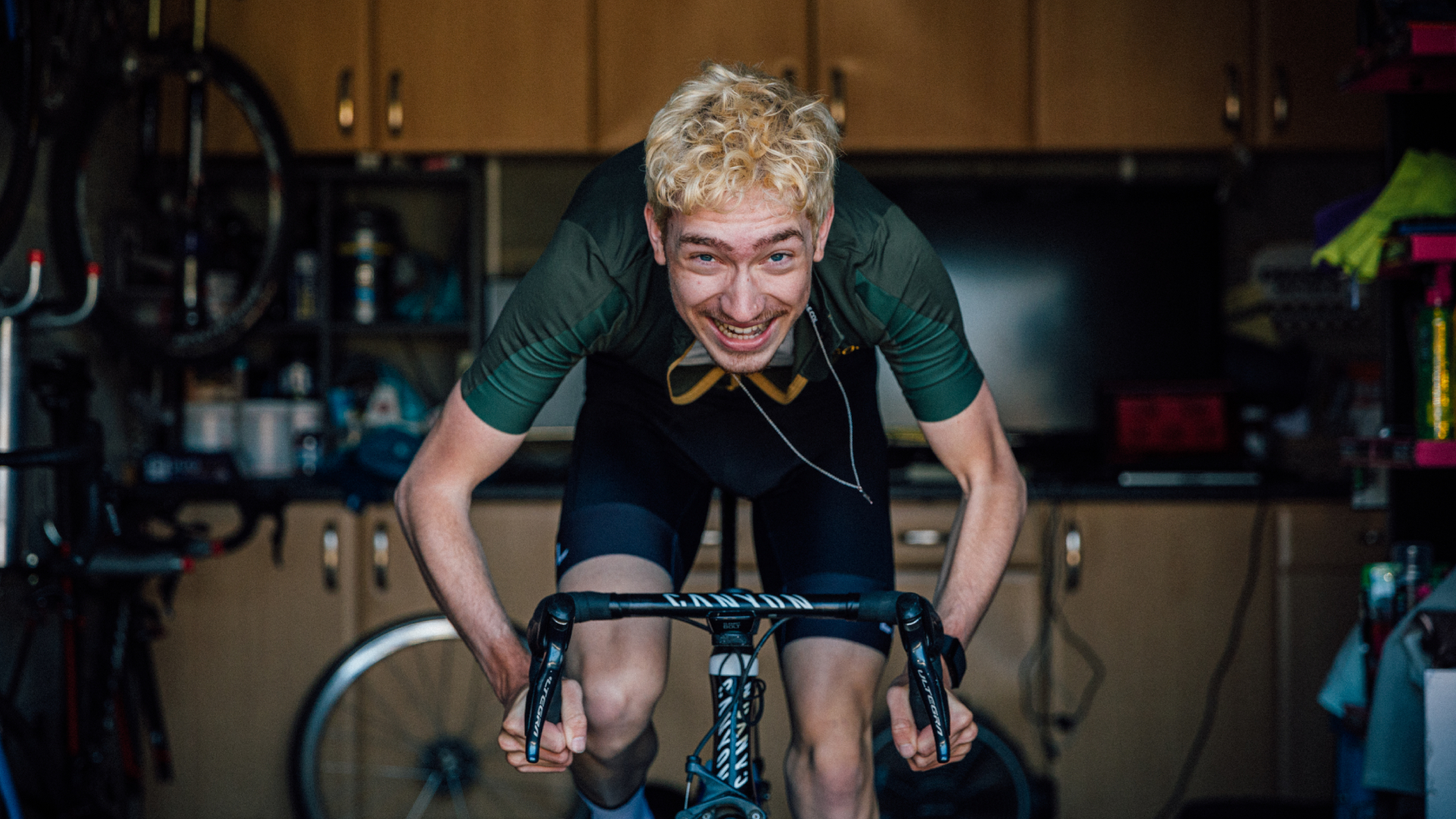Love or loathing? What your favorite and 'dreaded' cycling workouts say about your strengths and weaknesses
A cycling coach's guide to why you're succeeding - plus how to improve where you're not!


One of the best things about training in cycling is that there is such a huge variety of sessions which we can choose from to boost our fitness and progress our development.
But this also means that - for most of us - there are some sessions which we excel at and particularly enjoy, whilst others can stimulate feelings of dread when we see them coming up in our cycling training plans!
But what do our feelings of love (or loathing!) for particular sessions really mean? What does that say about our strengths and weaknesses? And what can we do to improve in these areas? We take you through the details on seven key sessions...
1. Zone Two Endurance ride
Why you might love these
Being good at these sessions requires solid aerobic endurance as you will be exercising for multiple hours. To fuel this work, your body has to be well adapted at using fats as a fuel source as for longer durations; your muscle glycogen will be depleted and fat utilization becomes very important.
Why you might hate these
If you do not have good aerobic endurance and fat burning ability, you may find these longer rides particularly difficult. This will likely result in the dreaded ‘bonk’ where your legs feel empty and you have no energy left.
The latest race content, interviews, features, reviews and expert buying guides, direct to your inbox!
How to improve at these
There are several ways to improve your performance in these rides. Consuming enough fuel will help ensure the 'bonk' doesn’t happen - for longer rides, ideally 40-60g of carbohydrates an hour.
Doing a combination of Zone 2 endurance training and higher intensity intervals will improve your muscles' ability to use fats as fuel as well as increasing your aerobic engine and endurance capacity.
Curious to find out more? Here's this Zone 2 Endurance session explained.
2. Under/Overs
Why you might love these
Being good at these efforts likely means that you have an ability to recover at higher intensities. When performing , you will be switching from below your Critical Power, to working above it. This means you are constantly using and replenishing your Watts Prime - otherwise refered to as your anaerobic capacity. You also need a high pain threshold to deal with the increased Rate of Perceived Exertion (RPE) from generating fatigue metabolites.
Why you might hate these
If your ability to utilize lactate as a fuel is lower, then riding for extended periods above both the first and second lactate threshold is understandably going to feel tough. Generating a lot of blood lactate also results in increased hydrogen ions, which is one of the fatigue mechanisms that decreases our performance at higher intensities.
Additionally, if your Watts Prime is low compared to your Critical Power, then you will have a smaller reserve to dip into for the 'overs', meaning you will run out of that reserve sooner.
How to improve at these
Working on sustained workouts above your lactate thresholds can help deal with your ability to both tolerate and clear lactate from your blood, thus reducing the amount of hydrogen ions present too. Aerobic endurance training also helps with this thanks to greater fat oxidation reducing the associated generation of hydrogen ions after using carbohydrates.
Curious to find out more? Here's this unders/overs session explained.
3. Sweetspot
Why you might love these
Sweetspot efforts are right on the brink of what we can find sustainable for a longer duration of time. Being good at these efforts likely means that you are better able to control elements such as body temperature, carbohydrate usage, and lactate clearing.
Why you might hate these
If your lactate clearance isn’t great, if you don’t have great carbohydrate storage, or if you’re not great at heat tolerance... then you may find these quite difficult. Also, if your higher end aerobic endurance is low, then the longer sweetspot efforts will feel particularly difficult.
How to improve at these
Getting the endurance in will help - but so will some tempo work where you are doing longer durations at a power that is sustainable, but that is also uncomfortable. Doing those on the turbo can help build heat tolerance, whilst doing them outdoors can boost pain threshold.
With these sessions, it's particuarlly important to fuel well with carbs two to three hours beforehand - but not so much that you feel uncomfortable full for the efforts.
Curious to find out more? Here's this sweatspot session explained.
4. Micro intervals
Why you might love these
Being resistant to pain and having a high Watts Prime will make these efforts feel a lot easier, as they generate a lot of inorganic phosphate which is what causes the burn we feel during high intensity workouts.
Why you might hate these
If you have a low Watts Prime, then your reserve above CP will be low and these will drain quicker. Also, if your pain tolerance is low, then the repeated efforts will be particuarlly difficult as the pain in your legs steadily increases.
How to improve at these
As with so many things in life, practise will help - over time your tolence of these efforts will start to increase. You'll also get stronger and better able to put out the power, as any degree of high intensity workout above CP will help boost Watts Prime.
Curious to find out more? Here's this 30/30s session explained.
5. Sprints
Why you might love these
You’re a big watt monster with plenty of fast twitch muscle fibres who loves to feel their muscles burning!
Why you might hate these
Being fully anaerobic, these produce a lot of inorganic phosphate which causes our legs to burn. Additionally, fewer fast twitch fibres will mean less capacity to produce huge sprint watts relative to our CP/FTP.
How to improve at these
Hitting the gym and doing high torque strength work and then high speed power work will increase muscle fibre contractions to generate more force in a shorter amount of time. Also creatine supplementation can assist in both maximal sprints and repeated sprints.
Curious to find out more? Here's this sprint mixer session explained.
6. Maximal Aerobic Power efforts
Why you might love these
If you’ve got a big aerobic engine and a high VO2max then these efforts will be your strength as they require a huge amount of energy to be produced aerobically requiring a lot of oxygen to fuel them even though they are likely only 4-6 minutes long.
Why you might hate these
If you don’t have a very high VO2max or can work at a higher percentage of VO2max for longer, these will be tougher. Some people find 120% CP/FTP fine for MAP efforts, others it’s more like 105%. Peak VO2 is a strong indicator of performance in these efforts.
How to improve at these
A combination of Zone 2 rides to boost mitochondria and blood capillaries increases the amount of oxygen that goes to the muscles and the rate that fuel can be broken down to produce ATP. Additionally micro intervals at a 40sec MAP, 20sec easy ratio can be helpful at boosting capacity in these longer efforts.
Curious to find out more? Here's this MAP (Maximal Aerobic Power) session explained.
7. Glycolytic capacity
Why you might love these
These are your big long sprint, big attack style of efforts. Those with a strong sprint will likely enjoy the first part of these efforts, and those with a high glycolytic capacity (breaking down carbs without oxygen) will also flourish.
Why you might hate these
A low ability to break down carbs very fast anaerobically will mean you struggle with these efforts. Also a low overall muscle mass in the legs will be a limiter.
How to improve at these
Gym work can be great for increasing the muscle size and force production, following a structured programme with progressive load and correct phases. Improving your glycolytic enzyme function can help too, by doing these efforts as well as long sprints where you keep pushing after the sprint has ended, and by making sure you fuel these efforts well with carbs. Low carb or neglecting any form of intensity can reduce the level of these enzymes present so we can’t do these really short sharp efforts.
Curious to find out more? Here's this glycolytic capacity session explained.
Andy is a Sport & Exercise Scientist, fully qualified and experienced Cycling Coach, Sports Director, Freelance Writer, and Performance Consultant. He spent 3 years riding for a UCI cycling team and 7 years as a BC Elite rider, competing in prestigious events such as the Tour of Britain and the Volta a Portugal.
Graduating with a first-class honours degree in Sport & Exercise Sciences, he continues to pursue his interest in research in the field of Sport Science alongside managing his coaching business, ATP Performance. He also works as a Wind Tunnel operator and Performance Consultant at the Silverstone Sports Engineering Hub, working with individuals, teams, and businesses to optimise performance and develop products.
